
- Share via
Vito Paulekas was a freak. He was also a painter, a sculptor, a marathon dancer, a felon, an enthusiastic devotee of free love and a civic leader. He enlightened many, infuriated others and was the sort of influencer who would have blown up on TikTok and Instagram. Too bad he was born about 100 years too soon.
In the 1960s, Paulekas helped change the way a generation danced by eschewing rigid norms of partner-focused choreographed steps that had dominated Western cultures for centuries. If you’ve ever been to a Grateful Dead show or seen the “Woodstock” movie, you’ll find ample evidence of his impact.
Paulekas viewed dance as a form of self-expression whose movements should be determined solely by how the music’s beat makes you feel, and he led a ragtag troupe of young dancers (known as the Freaks) into clubs around L.A. They never had to buy tickets — Vito’s dancers were VIPs at all the happening spots on the Sunset Strip. The club owners’ mantra was fueled by simple economics: If the Freaks were making the scene, crowds would follow.
David Crosby, a founding member of the Byrds, says the Freaks “helped spread the vibe” about the band, adding, “They were our first fans.” When the Byrds needed a place to rehearse, Paulekas let them use his basement. “He became sort of a friend,” Crosby, who is now 80, recalls. “He was a loose screw but a good guy and … definitely different.”
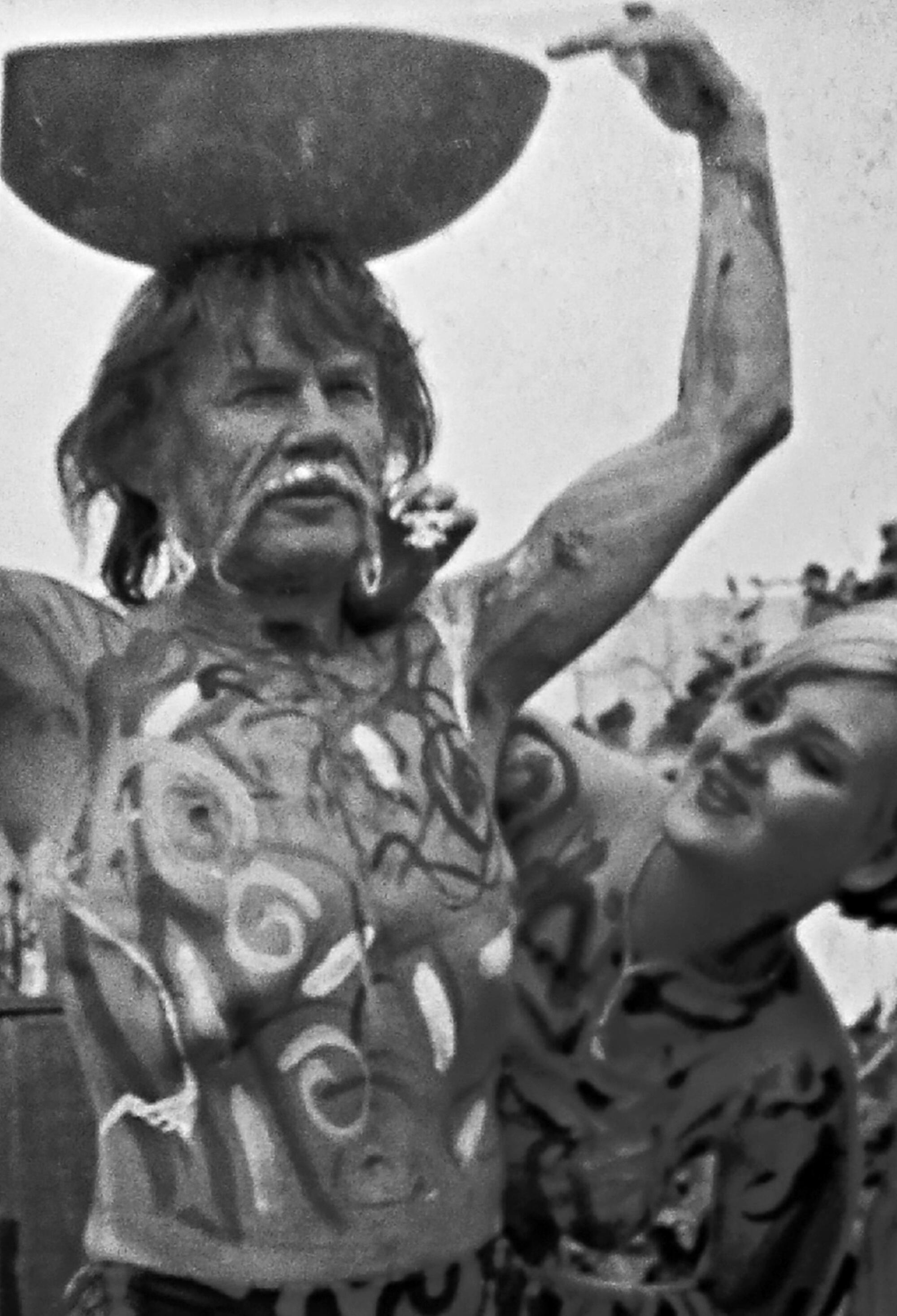
Paulekas was easy to spot in the crowd of wildly attired, spasmodically gyrating teenagers: He was the old guy in his 50s with the wisps of silver hair, Salvador Dali goatee and white bell bottoms. Lean and sinewy, with snakelike flexibility, Paulekas contorted without restraint on the dance floor. BB Paulekas says his father “was a magnet for the crazies,” but everyone seemed to know Vito — his reach extended from actors such as Jack Nicholson and Robert Mitchum to musicians, Beverly Hills housewives and sleazy scenesters.
Nonetheless, in the years since his 1992 death, his legacy — a small but pivotal contribution to the youth culture zeitgeist — seems to have been forgotten, his name buried in a sentence or paragraph in essays and books about L.A. rock in the 1960s or on obscure websites.
It’s a different story in Cotati, Calif. Paulekas is revered for transforming the small Sonoma County town, best known for its plethora of chicken farms and bars (14 in a one-mile radius), into a cultural hotbed, a freak town. He even morphed into a respected member of society (sort of). How is it possible that a man once described as the first hippie, who rubbed shoulders with Frank Zappa and Steve Allen, who was a guest on “The Tonight Show With Johnny Carson,” whose dancers were featured in Life magazine, is an asterisk — at best — in Los Angeles history but has his own page on the city of Cotati website?
It’s complicated.
When he is remembered, it’s often for the lurid aspects of his life: He was a pied piper for underage girls, he had a cult-like grip on his dancers, and his response to the death of his 3-year-old son was startling. Internet conspiracy theorists have suggested he was a Satanist or an FBI informant. That’s what people remember.
Barney Hoskyns learned about Paulekas while researching his 2009 L.A. rock history book “Waiting for the Sun.” Now, more than a decade later, he sounds uncertain about what to believe. So, like many others, he hedges.
Through the interview process, Hoskyns says, “it became clear Vito was some sort of shamanic magus, a typical L.A. fraud, perhaps. But let’s just say he was clearly very important as an instigator and ringleader and Svengali who channeled his bohemian impulses into the birth of freaky scenesterism on the Sunset Strip.”
Dancing had always been significant to Vitautus Alphonsus Paulekas, the son of Lithuanian immigrants who was born in 1913 in Lowell, Mass. In the early 1930s, he was a marathon dancer, a popular fad during the Great Depression, and he once earned $1,000 in prize money.
The fad — and the money — didn’t last. In 1938, Paulekas was convicted in an armed robbery of a movie theater, but four years later his sentence was shortened when he joined the U.S. Merchant Marine, delivering supplies to troops at Normandy. After World War II, he settled in Los Angeles, eventually moving into a three-level building at 303 Laurel Ave., near Beverly Boulevard, where he began to sculpt and teach art classes. The studio was his home and workplace for more than 20 years.
He lived on the second floor; the ground level was a storefront, which displayed Vito’s sculpture and, in the 1960s, was also a clothing boutique for his wife Sue’s proto-hippie fashions. The studio was in the basement.

Paulekas’ work was featured in gallery shows in Los Angeles throughout the 1950s, but he paid the rent teaching clay sculpture in classes with nude models. “He catered to women who lived in Beverly Hills that were very, very rich and wanted to learn how to sculpt,” says Danny Weil, an author and public interest attorney who met Paulekas in 1974, while working as a tenant organizer. “But a lot of them wanted sex. And for some reason, Vito became a sex god to these Beverly Hills people.”
Appearances on the cover of jazz drummer Chico Hamilton’s 1956 album “Chico Hamilton Quintet in Hi Fi,” and on the Groucho Marx-hosted game show “You Bet Your Life,” on which he won $5,000 for guessing the secret word, heightened his profile as a cool beatnik artist and broadened his clientele, many of them students from neighboring Fairfax High School. “He was 48 years old in 1960. And he met young women who were like 18,” says Weil. “And one of them was Sue.”
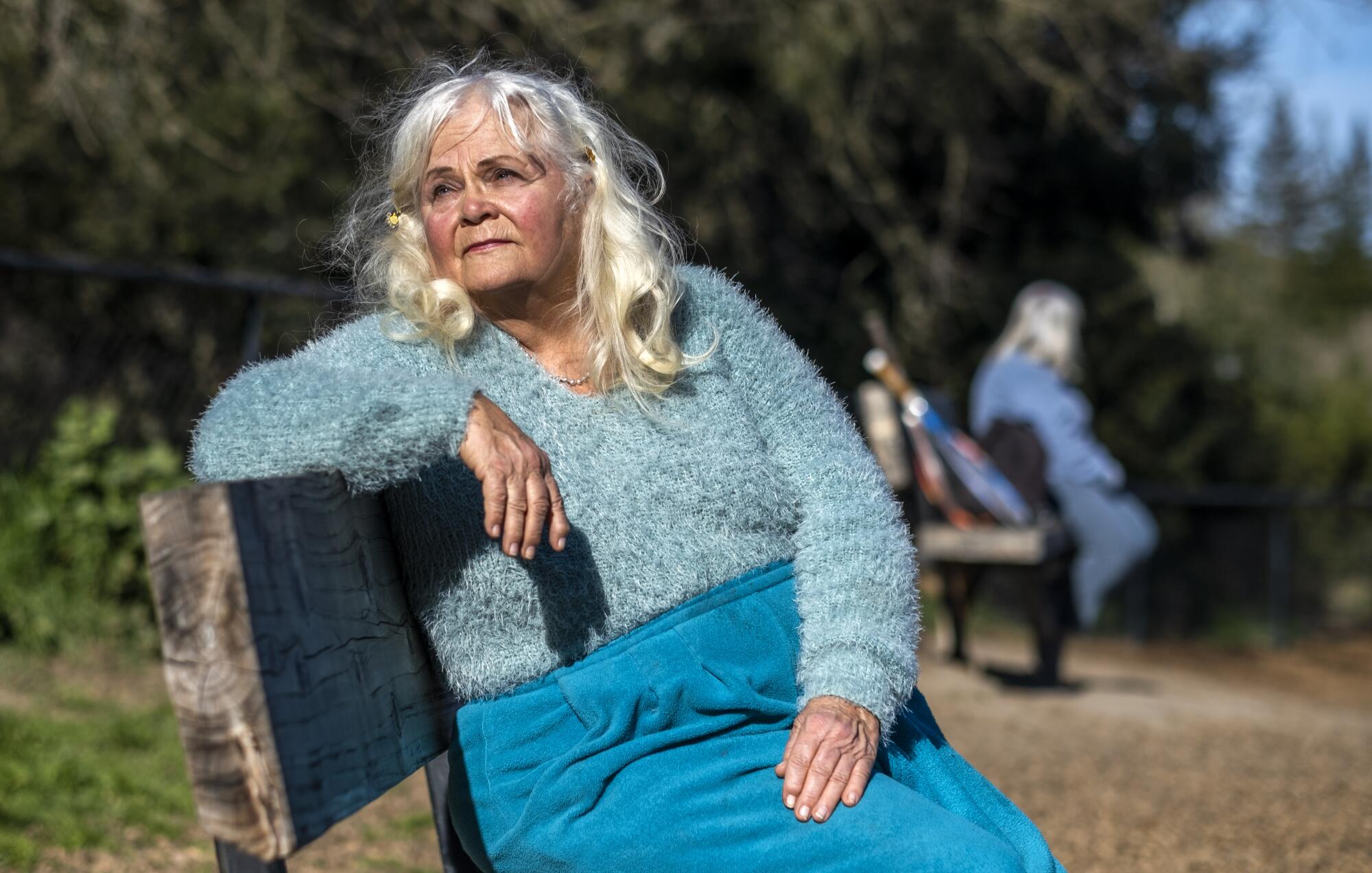
Sue Shaffer, later Szou Paulekas, became Vito’s wife in 1961. They divorced in 1975. She’s now 79 and lives on a quiet street in Sebastopol, not far from Cotati, where she, Vito and daughter Gruvi settled after leaving Los Angeles in 1968.
She was 17 when she came to his studio, prompted by a dream about attending a sculpture class. “I really took to the sculpture. And then after about a year, I started going out dancing with him at night with a lot of people.”
At first, Sue mostly helped collect class fees and made coffee but soon discovered a talent for creating dresses made from tablecloths and thrift store garments that she could make quickly and cheaply and were sold along with Vito’s sculptures. “Sue is the one that started all the hippie stuff,” says Weil. “All the handbags, the tie-dyed jeans. She was the master.”
Paulekas’ comrade-in-freak for three decades, Carl Franzoni, met the sculptor in 1962, not long after moving to Los Angeles to join a sex toy business. After mail fraud charges derailed the company, Franzoni decided to restart his life.
If Paulekas was the creative director of his informal dance troupe, Franzoni was its crazy male lead, the face of the Freaks. He wore tights, capes and codpieces and embraced the nickname given to him by a member of Zappa’s Mothers of Invention: Captain F—.
”Carl was the second in command,” says Julian Porter, who became a regular visitor to the studio in the 1960s starting at age 8, when his newly divorced mother began taking him to sculpture classes. “When I met him, he was dressed in tights with a Dracula cape and these gigantic boots. And he had this hair that was like a bush ... he looked like a gigantic monster.”
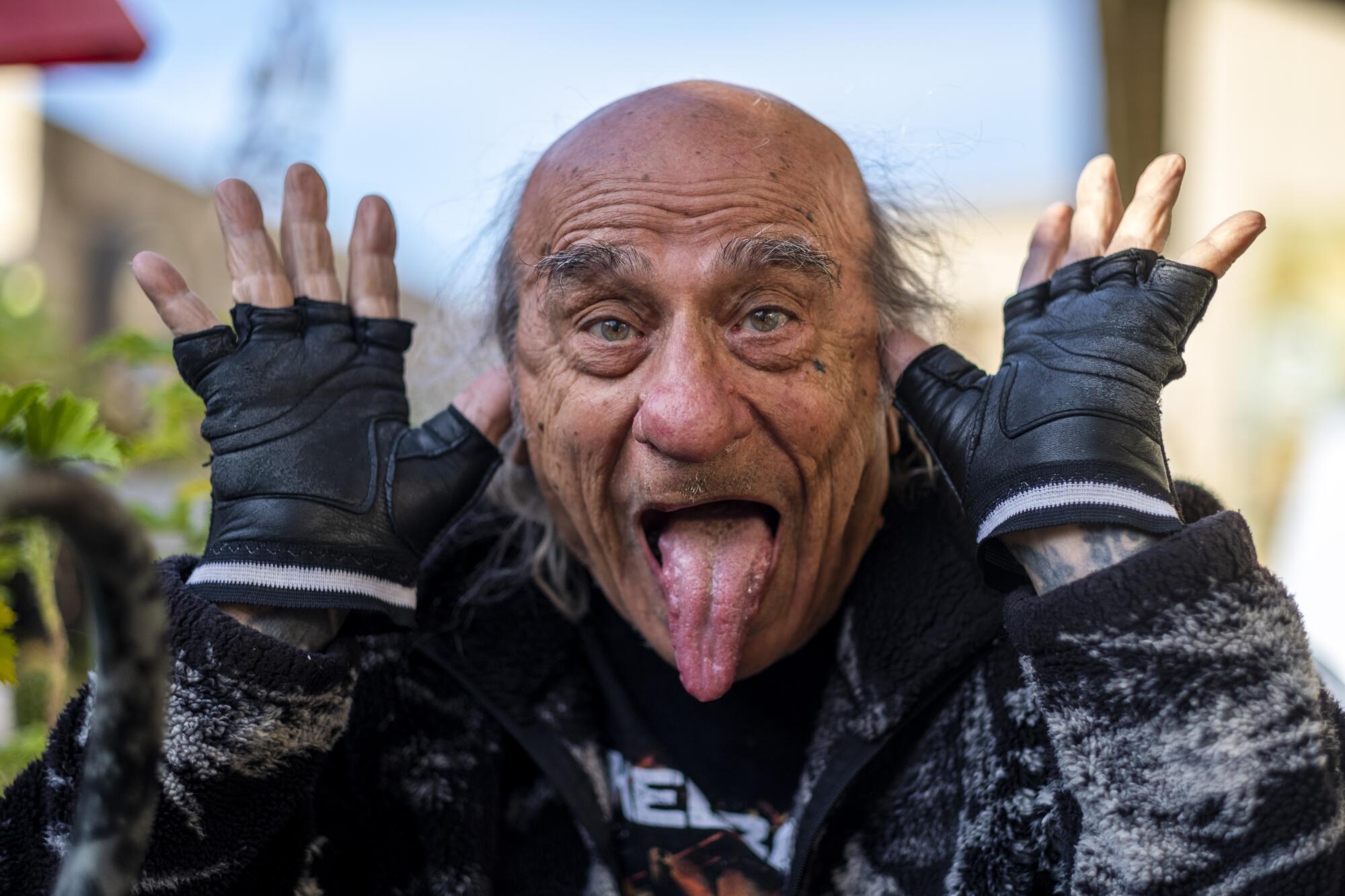
As it turned out, people liked to watch a gigantic monster dance.
As clubs opened on the Strip, Vito’s dancers became a regular part of the scenery, as much or more of an attraction than the bands themselves.
Arizona-based artist Lauren Raine danced with the Freaks in the mid-1960s. She remembers those nights as spiritual experiences. “We would dance till we were comatose,” she recalls. “It was free-form,” Raine says, which meant the kids embraced it. “It wasn’t choreographed at all, which, for the time, was quite an innovation.”
The Freaks were also turning audiences on to L.A.’s new, mind-blowing music scene. An appearance was viewed as a measure of success for emerging bands.
In a 1966 interview with the British publication Record Mirror, L.A. impresario Kim Fowley said, “Nowadays, if anyone opens a new club on the West Coast, they have to invite Vito and his crowd. They all wait there eagerly to see if [Paulekas] turns up. If he does, everything’s OK. It makes the place.”
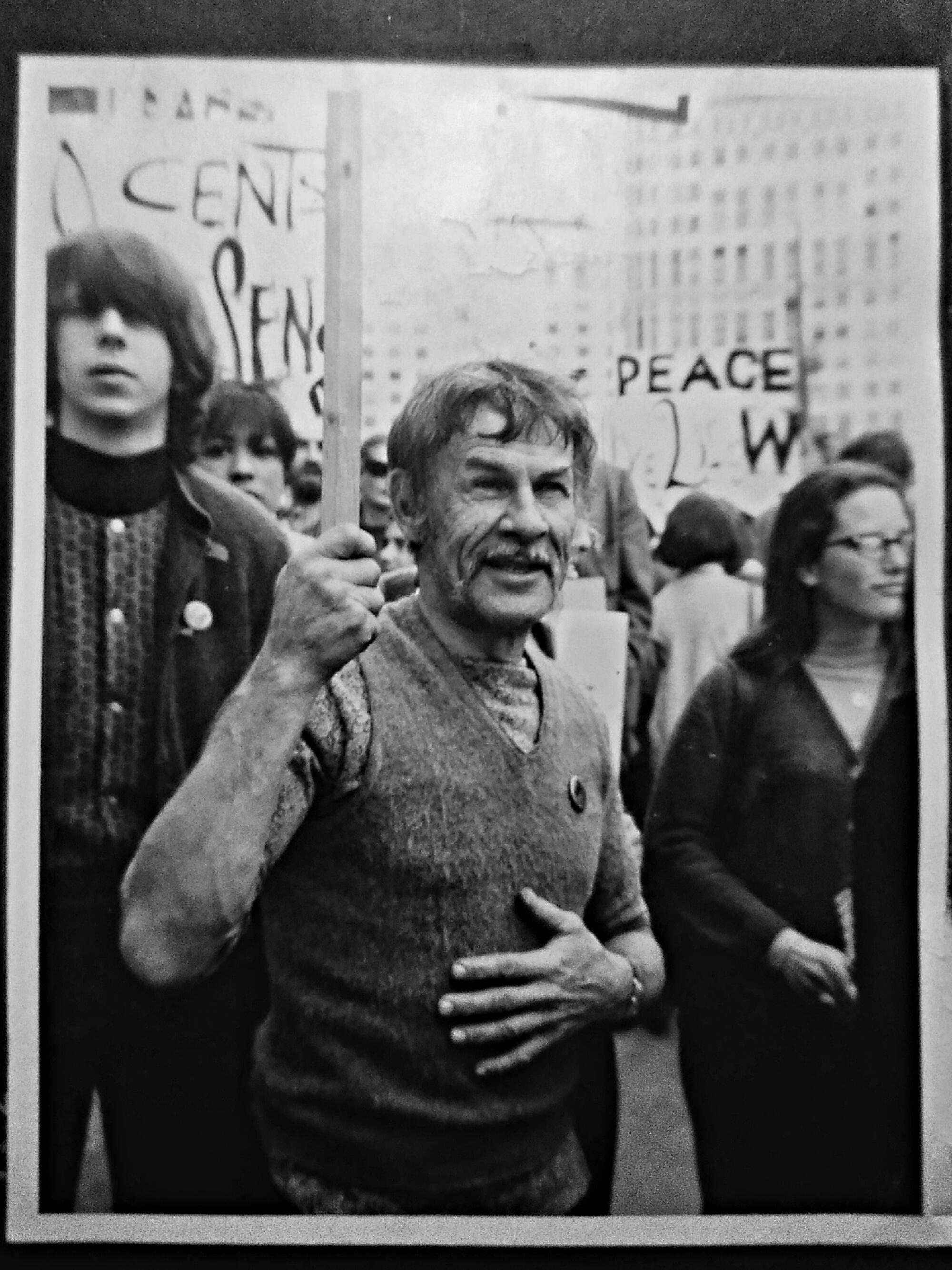
In addition to the Byrds, Paulekas had a hand in the emergence of Love, Fraternity of Man and the Mothers of Invention. (He even put out his own record, a 1966 single produced by Fowley and credited to Vito and the Hands.) Paulekas and crew frequently appeared on TV and in ‘60s cult films such as “Mondo Hollywood” and “You Are What You Eat.”
In L.A., Paulekas had become a hippie headmaster, a man who was celebrated for unabashedly living outside the mainstream — for being a freak. Yet even when accounting for an era defined by experimentation and nonconformity, the death of his 3-year-old son, Godot, is an unsettling story.

The firstborn of Vito and Sue (he had two children from an earlier marriage), Godot was described as “the most beautiful child in creation” in a September 1966 Life magazine story headlined “The Mad New Scene on Sunset Strip.”
Godot died on Dec. 23, 1966, not long after a fall down an air shaft on the roof of Paulekas’ home/studio during a photo shoot with the Los Angeles Free Press. Sue says the fall was the result of the careless horseplay of teen boys, who’d been dangling the child. But she blames Los Angeles County General Hospital, where Godot was taken after the accident, for his death.
The official cause of death was shock due to his fall. Paulekas later sued the hospital for malfeasance (he lost the case). But, in the moment, just hours after their son’s death, Vito, Sue and their friends did what they did most evenings: They went dancing.
“The grief was so overwhelming,” Sue recalls, “that it would be worse to be alone with that grief than to be with our friends, pump our blood and get our juices going.”
Godot’s death didn’t deter the growth of Paulekas’ freak contingent, even within his own immediate family: Daughter Gruvi was born just as the Summer of Love commenced in 1967, even as Vito and Sue’s relationship defied the norms of conventional morality.
“Even though they were married and absolutely devoted to each other, the big free love thing hit pretty hard,” Porter says.
Today, Paulekas’ attitudes toward sex would likely become a #MeToo firestorm, but in the 1960s, sexual adventurism was part of the youthquake-hippie manifesto. “Everybody was exploring countercultural possibilities and altered experience,” says Raine, “and I’m sure sex fit into that too. I mean, everybody had a lot of sex in those days, right?”
Paulekas’ liberated lifestyle looked especially appealing to teens flooding into Hollywood from suburban enclaves like the South Bay and the San Fernando Valley, looking to rebel and immerse themselves in the growing alternative scene.
Pamela Des Barres (nee Miller) was from Reseda. The author of “I’m With the Band” and six other books was 18 when she began visiting Paulekas’ studio in 1966. She hung out there and later danced with the Freaks.
“He just gathered this motley crew of people together who loved what he was trying to do and say,” she says. “He was a fascinating character.”
Much of Des Barres’ written work is rooted in a period of her life when she was a rock groupie. The world has evolved, but Des Barres reveals her memories without judgment. “He was having flings, relationships, whatever you want to call it, with many underage people. It was just the time,” she says.
Paulekas offered people like Des Barres a place to crash and a hot meal — a pot of stew was on the stove most nights. “The truth is these people didn’t fit into society. He took in outsiders like stray dogs, but he respected everyone,” says Robert Aminzade, who first glimpsed the Freaks as he tripped on LSD at the Easter 1967 Love-In at Elysian Park. He got to know Paulekas in the 1970s when he worked as a substitute teacher/school bus driver in the Cotati area.
But the steady stream of younger visitors — along with Paulekas’ anti-establishment public pronouncements — triggered law enforcement interest, according to Weil. “Vito was consistently under scrutiny,” he says.
“The police knew about Vito, and they didn’t like him,” says Porter. “They were trying to get him on something. It was people calling the police on him and so on, [saying,] ‘I don’t know where my daughter is. I think she’s over at Vito’s.’”
“I just started to believe that this was dangerous,” Sue says. “And I mentioned it to Vito, we’ve got to get out of here. He just immediately started packing and selling stuff.”
Paulekas, Sue and 1-year-old daughter Gruvi left Los Angeles in late 1968, spending time in Haiti, Jamaica and Puerto Rico, before settling in Cotati in 1969.

He and Sue had three more children — Phreekus, Sky and BB — before their 1975 divorce. He later remarried and had another child, Sophia Crème. Gruvi died in 2008.
In Cotati, Paulekas morphed into a bizarro city father: He became politically active, regularly speaking out at City Council meetings. He built a bandstand at La Plaza Park, created a wood sculpture of town namesake and Pomo tribe leader Chief Cotati and taught dance classes at Sonoma State for nine years. Of course, conventional rules were often circumvented. The bandstand, built by volunteers who used discarded wood and chicken coop wire, was not sanctioned by local government and was embraced only after the once-empty park became a vibrant community center.
In 1973, Paulekas formed an absurdist theater and musical troupe called Freestore, modeled after San Francisco’s Diggers. “Half of the guys were freaks from Hollywood that followed him up here,” says BB. Other members included Peggy Farrar, Leonardo DiCaprio’s stepmother.
“He built a culture there,” says Weil. “It just exploded.”
As a child, son BB recalls feeling embarrassed by some of his father’s antics but now appreciates his approach to life. “I have a license to freak and do whatever I want,” he says. “I can walk around naked if I want, you know what I mean?”
And maybe that’s Vito’s true legacy: giving those he encountered a license to freak, to express themselves creatively, untethered to the restrictions of conformity.
At 87, Franzoni may not be able to dance like he could at the Whisky a Go Go, but he’s still a believer. Inside his cramped Santa Rosa flat filled floor to ceiling with artwork and tchotchkes, he reflects on a freak life well lived. “If you’re a dancer, an entertainer, you’re turning people on. We did our job.”
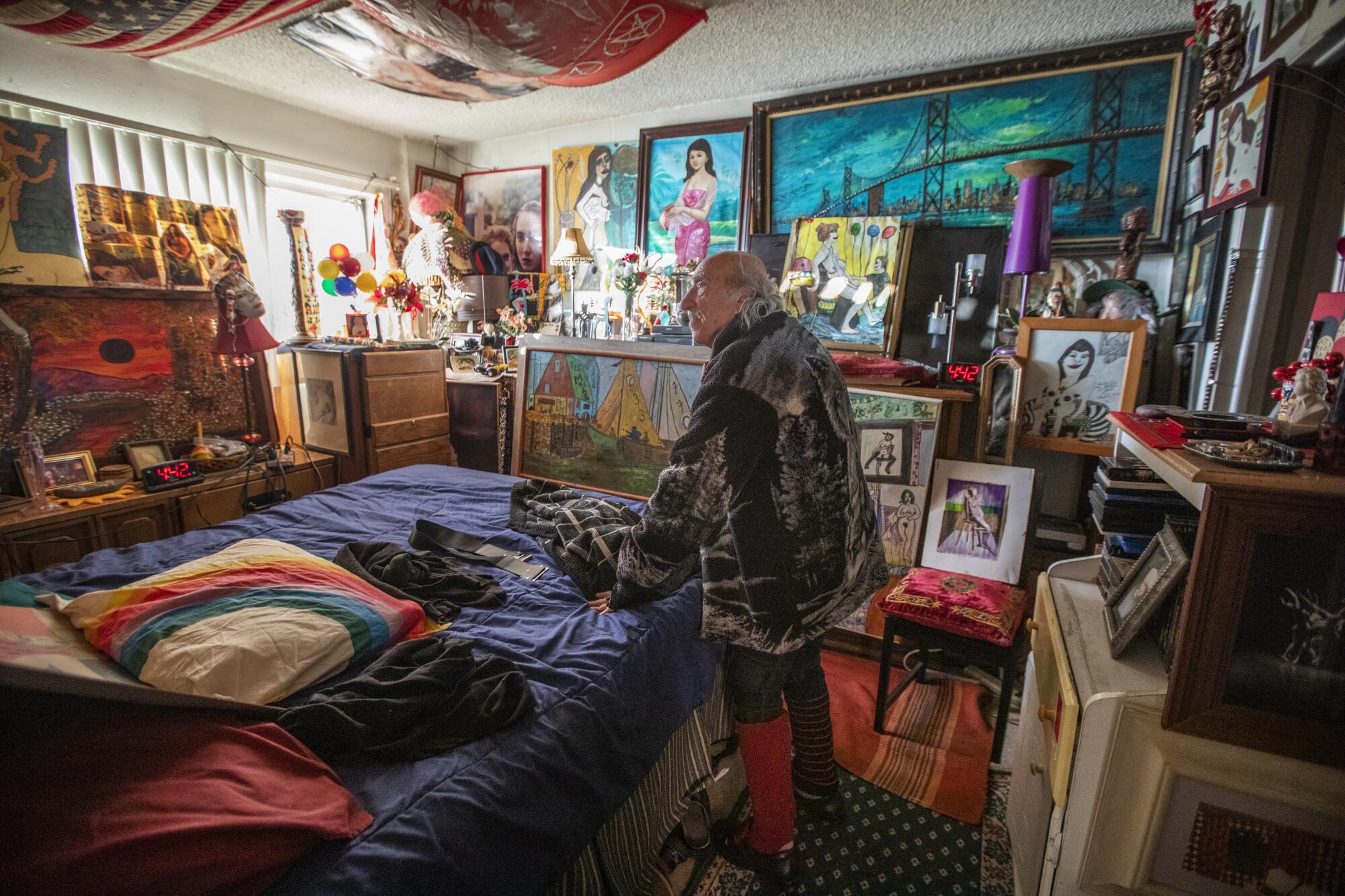
More to Read
Sign up for Essential California
The most important California stories and recommendations in your inbox every morning.
You may occasionally receive promotional content from the Los Angeles Times.









